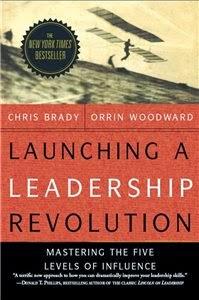 “Try honestly to see things from the other person’s point of view.” - Dale Carnegie
“Try honestly to see things from the other person’s point of view.” - Dale CarnegieThere is a plethora of behaviors that an effective leader can approach leadership with, but what it comes down to be is their leadership style. A leadership style is defined as a relatively consistent pattern of behavior that characterizes a leader. The leader’s personality is the reason why much of this consistency even occurs, says DuBrin. Straub places leaders into four different categories of styles: autocratic, democratic, laissez-faire, and situational. And even though a leader might represent or favor one particular style, there is no ideal approach to leading people. This is to say that a leader must adjust and apply how to lead each individual differently.
The first category mentioned in Straub’s list is the autocratic leaders. An autocratic leader tends to be highly opinionated and militaristic. The consistent attitude of, “I’m paid to think; you’re paid to work,” is a big reason why it is difficult to get the best performance out of employees, because most employees do not want to be treated as some kind of robot or slave. Since an autocratic leader is known for denying themselves the input, suggestions, and viewpoints of their team members, they can be considered helpful when it comes to figuring out how to solve a problem or tackle a new opportunity. Furthermore, the autocratic style of leadership can be utilized in situations where employees must follow highly detailed, critical, or inflexible procedures or training the totally inexperienced or unmotivated ones.
The opposite style of being autocratic would be the democratic type. A democratic leader has the attitude of, “We’re paid to think and work as a unit.” Democratic leaders are generally favored more than an autocratic leader, simply because they tend to get the full benefit from their employees’ ideas, opinions, and views. In cause of the team-oriented style and participation, a democratic leader tends to need more time to solve problems or analyze opportunities. This is often true because being a democratic leader consists of negotiating, discussing, and consulting closely and relatively with employees and team members.
The laissez-faire leader is one who works well with people who are highly trained, self-motivated, competent, and mature. They provide general direction and overall guidance, while giving their employees as much freedom as possible. A laissez-faire leader is confident in their employees’ abilities and trusts in the, to manage and handle duties responsibility, says Straub.
The final category of Straub’s list is a situational leader. This is the type of leader who is able to adjust their behavior to the unique combination of factors that affect the situation at hand. Coming back to influence once again, these factors are the ones that affect situational leadership: peers, supervisors, employees, policies and rules, personal background and experience, and time. By acknowledging the impact of these internal and external influences a manager should choose the leadership approach that best suits the scenario and each individual who is involved.
Daniel Goleman sees primal leadership as being either a dissonant or resonant leader. He describes a dissonant leader as being one who is out of touch with the feelings of people. When such leaders create dissonance, it results in collective distress, sending upsetting messages and causing poor performance from others. On the other hand is the resonant leader. Resonance minimizes the noise in a system. The more resonant people are with each other, the less static there is amongst their interactions.
This blog wraps up the Leadership Series! Thanks to all those who have followed along. As I mentioned in the first blog of the series, one person will get the chance to get a FREE leadership book by providing a comment about your best personal insight on leadership, why you think you are a leader, and how you can become a better leader. Sharing with others also helps your chances.
That one person will get the leadership book: Launching a Leadership Revolution by Chris Brady and Orrin Woodward!
Ask me how to get more leadership material and make money doing it at [email protected]
